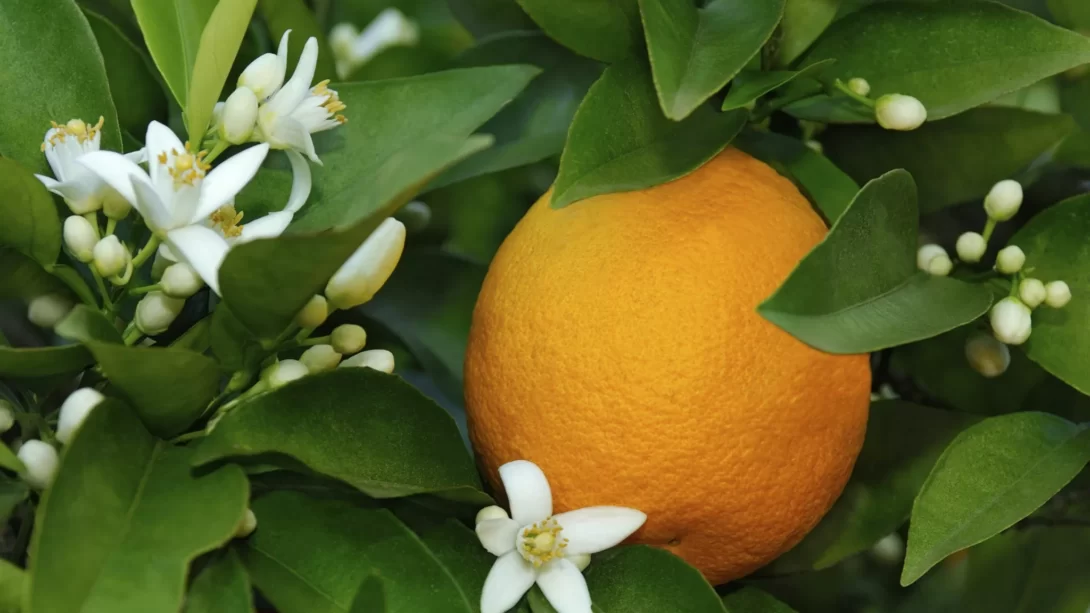Orange trees, with their fragrant blooms and vibrant fruits, are a symbol of abundance and freshness. Belonging to the Citrus genus, these trees are not only valued for their delicious fruit but also for their beautiful, aromatic blossoms. Understanding the bloom season of orange trees is vital for both commercial growers and home gardeners, as it directly influences fruit production and overall tree health.
The blooming of orange trees is an enchanting period, marked by the emergence of white, sweet-smelling flowers. This phase is crucial, as it sets the stage for fruit development. By recognizing the importance of the bloom season, growers can implement better care practices to ensure a bountiful harvest.
Orange Trees
Orange trees come in various types, each with unique characteristics and growth requirements. Common varieties include sweet oranges like Valencia and Navel, as well as others like the Seville or blood orange. While they share similar growth cycles, differences in climate adaptability, fruiting times, and tree size can influence their blooming patterns.
The general growth cycle of orange trees follows a pattern of dormancy in winter, flowering in spring, and fruit development in late spring to summer. However, the exact timing and duration of these stages can vary depending on the specific variety and growing conditions.
Climate and Its Influence on Blooming
Climate plays a significant role in determining the blooming period of orange trees. These trees thrive in a subtropical to tropical climate, requiring a distinct period of cooler temperatures to initiate flowering. Typically, a few weeks of temperatures between 13-15 degrees Celsius (55-59 degrees Fahrenheit) are necessary to stimulate bloom.
In regions with ideal citrus-growing conditions, such as parts of California, Florida, and the Mediterranean, the synchronization of climate and blooming is more pronounced. Conversely, in areas with less optimal conditions, artificial measures might be needed to encourage blooming. Understanding these climatic influences helps in predicting and enhancing the blooming period of orange trees.
Typical Blooming Season for Orange Trees
The typical blooming season for orange trees generally occurs in spring. In the Northern Hemisphere, this usually means a bloom period starting anywhere from late February to early May, depending on the local climate and specific orange tree variety.
Geographic location significantly influences the blooming period. For instance, orange trees in Florida might bloom earlier than those in California due to differences in winter temperatures and the length of cooler periods. Similarly, different orange tree varieties might have slightly varying bloom times. For example, Navel oranges often bloom earlier than Valencia oranges.
The duration of the bloom season can also vary but generally lasts several weeks. This period is crucial for the subsequent development of fruit and overall tree productivity. Understanding the typical blooming patterns in your region and for your specific orange tree variety is key to providing the right care and maximizing fruit yield.
Recognizing Orange Tree Blooms
Identifying when an orange tree is about to bloom is important for implementing timely care practices. Orange tree flowers are typically white and quite fragrant, making them a sensory delight in any garden. These blossoms are usually around one inch in diameter and often appear in clusters.
As the blooming period approaches, look for buds that begin to swell and change color, usually turning from green to a more creamy hue. The opening of these buds signifies the start of the blooming period. Being able to recognize these signs allows gardeners to adjust care practices accordingly, ensuring the tree is in optimal health to support the development of these blossoms into fruit.
Factors Affecting Orange Tree Blooming
Various environmental factors can significantly impact the blooming of orange trees. Temperature is a key element; a period of cooler weather is essential for the initiation of blooms, followed by a return to warmer temperatures to support the opening of the flowers. Inadequate cold exposure can lead to sparse or delayed blooming.
Sunlight and water availability also play crucial roles. Orange trees require full sun to bloom abundantly. Inadequate light can result in fewer flowers. Similarly, consistent watering, particularly during the budding and flowering stages, is important. However, overwatering or poor drainage can be detrimental.
The age and health of the tree are equally important. Young orange trees, typically under three years old, may not bloom or bear fruit. Trees that are older and well-established are more likely to have abundant blooms. Regular health checks for signs of disease or nutrient deficiencies can help ensure that the trees are capable of productive blooming.
Care During the Blooming Period
Proper care during the blooming period is essential for the health of the tree and the quality of the fruit. This includes appropriate watering, ensuring that the soil is moist but not waterlogged. Over-watering during bloom can lead to blossom drop, whereas under-watering can stress the tree and reduce bloom viability.
Pruning is another important aspect of care. While heavy pruning should be avoided during the blooming period, removing dead or diseased limbs can improve air circulation and light penetration, benefiting the overall health of the tree.
Fertilization should also be considered. Applying a balanced citrus fertilizer before the onset of the bloom can provide the necessary nutrients for flower and subsequent fruit development. However, it’s important to follow recommended guidelines to avoid over-fertilization, which can be as harmful as under-fertilization.
This period of care is crucial in setting the foundation for the fruiting season. By providing the right balance of water, nutrients, and physical care, gardeners can significantly influence the quantity and quality of the fruit produced.
Post-Bloom Care and Fruit Setting
Once the bloom period concludes, the focus shifts to ensuring the optimal setting of fruit. This phase is critical as the flowers develop into the oranges we eventually harvest. Adequate sunlight and continued proper watering are vital during this stage. The tree should be watered deeply and less frequently, promoting strong root growth and healthy fruit development.
Additionally, monitoring for nutrient needs is important. A balanced fertilizer, rich in potassium and phosphorus, can support fruit development. However, over-fertilization, especially with high nitrogen content, should be avoided as it can lead to lush foliage at the expense of fruit production.
Thinning the fruit may be necessary if the tree produces an overly abundant bloom. This process involves removing some of the young fruit to prevent overcrowding, allowing the remaining fruits to grow larger and healthier. Thinning helps in managing the tree’s energy resources more effectively.
Common Issues During Blooming
Orange trees can face several challenges during the blooming period. One common issue is blossom drop, where flowers fall off before they can set fruit. This can be caused by environmental stress, such as extreme temperatures, insufficient watering, or nutrient imbalances. Ensuring consistent care during fluctuations in weather and maintaining a regular watering and feeding schedule can mitigate this issue.
Pests and diseases can also impact the blooming and fruit-setting stages. Regular inspections for signs of infestation or illness are crucial. Safe, effective treatments should be applied promptly to prevent significant damage. Natural pest control methods and disease-resistant tree varieties can be beneficial in managing these challenges.
Conclusion
The blooming period of orange trees is a critical and beautiful phase in the citrus growing cycle. By understanding the factors that influence blooming, recognizing the signs of imminent blooms, and implementing appropriate care practices, gardeners can greatly enhance the health and productivity of their orange trees.
Proper attention during and after the bloom, including watering, pruning, fertilizing, and pest management, sets the stage for a successful fruiting season. Addressing common issues promptly and effectively can ensure that the trees remain healthy and productive.
Growing orange trees can be a rewarding endeavor, offering both aesthetic and practical rewards. By investing care and attention during the bloom season and beyond, gardeners can look forward to enjoying the sweet fruits of their labor, both literally and figuratively.



